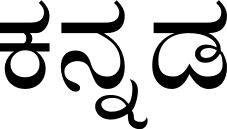Difference between revisions of "Language/Kannada/Vocabulary/Greetings"
m (Quick edit) |
m (Quick edit) |
||
| Line 8: | Line 8: | ||
__TOC__ | __TOC__ | ||
<span link>Once you've mastered this lesson, take a look at these related pages: [[Language/Kannada/Vocabulary/Colors|Colors]] & [[Language/Kannada/Vocabulary/Feelings-and-Emotions|Feelings and Emotions]].</span> | |||
== Greeting People in Kannada == | == Greeting People in Kannada == | ||
| Line 80: | Line 82: | ||
[[Category:Kannada-0-to-A1-Course]] | [[Category:Kannada-0-to-A1-Course]] | ||
<span gpt></span> <span model=gpt-4></span> <span temperature=0.5></span> | <span gpt></span> <span model=gpt-4></span> <span temperature=0.5></span> | ||
==Videos== | ==Videos== | ||
| Line 92: | Line 91: | ||
<youtube>https://www.youtube.com/watch?v=gOdlM3yaxnk</youtube> | <youtube>https://www.youtube.com/watch?v=gOdlM3yaxnk</youtube> | ||
==Other Lessons== | |||
== | |||
* [[Language/Kannada/Vocabulary/Animals|Animals]] | * [[Language/Kannada/Vocabulary/Animals|Animals]] | ||
* [[Language/Kannada/Vocabulary/Days-and-Months|Days and Months]] | * [[Language/Kannada/Vocabulary/Days-and-Months|Days and Months]] | ||
| Line 104: | Line 102: | ||
* [[Language/Kannada/Vocabulary/Meals-and-Ingredients|Meals and Ingredients]] | * [[Language/Kannada/Vocabulary/Meals-and-Ingredients|Meals and Ingredients]] | ||
* [[Language/Kannada/Vocabulary/Feelings-and-Emotions|Feelings and Emotions]] | * [[Language/Kannada/Vocabulary/Feelings-and-Emotions|Feelings and Emotions]] | ||
<span class='maj'></span> | <span class='maj'></span> | ||
| Line 111: | Line 108: | ||
{{Kannada-Page-Bottom}} | {{Kannada-Page-Bottom}} | ||
<span links></span> | |||
Revision as of 23:13, 27 March 2023
Welcome to the "Kannada Vocabulary: Basic Greetings and Introductions" lesson! I'm excited to share my knowledge of the beautiful Kannada language with you. As a teacher of Kannada for over 20 years, I have seen many students embrace the language and culture with enthusiasm. In this lesson, we will learn common Kannada greetings like hello, good morning, good night, and how to ask 'How are you?' I will also share some cultural information and interesting facts to enrich your learning experience.
Once you've mastered this lesson, take a look at these related pages: Colors & Feelings and Emotions.
Greeting People in Kannada
In Kannada, there are different ways to greet people depending on the time of day and the level of formality. It is essential to use the appropriate greeting to show respect and politeness. Let's start with the most basic and commonly used greetings.
Examples:
| Kannada | Pronunciation | English |
|---|---|---|
| ನಮಸ್ಕಾರ | Namaskāra | Hello/Goodbye (Formal) |
| ಹಲೋ | Halō | Hello (Informal) |
| ಶುಭೋದಯ | Shubhōdaya | Good Morning |
| ಶುಭ ಸಂಜೆ | Shubha sanje | Good Evening |
| ಶುಭ ರಾತ್ರಿ | Shubha rātri | Good Night |
Cultural Note
In Kannada culture, it is common to greet people with a slight bow and palms pressed together in a gesture called "Namaskara" or "Namaste." This gesture is a sign of respect and can be used in various situations, such as meeting someone for the first time, saying goodbye, or thanking someone.
Asking 'How are you?' in Kannada
Once you have greeted someone, it's polite to ask how they are doing. In Kannada, there are different ways to ask 'How are you?' depending on the level of formality and the person you are addressing. Let's learn some common phrases to ask 'How are you?' in Kannada.
Examples:
| Kannada | Pronunciation | English |
|---|---|---|
| ನೀವು ಹೇಗಿದ್ದೀರಿ? | Nīvu hēgiddīri? | How are you? (Formal/Respectful) |
| ನೀನು ಹೇಗಿದ್ದೀಯ? | Nīnu hēgiddīya? | How are you? (Informal/Friendly) |
| ನೀವು ಚೆನ್ನಾಗಿದ್ದೀರಾ? | Nīvu chennāgiddīrā? | Are you well? (Formal/Respectful) |
| ನೀನು ಚೆನ್ನಾಗಿದ್ದೀಯಾ? | Nīnu chennāgiddīyā? | Are you well? (Informal/Friendly) |
To respond to these questions, you can use the following phrases:
Examples:
| Kannada | Pronunciation | English |
|---|---|---|
| ಹೌದು, ಚೆನ್ನಾಗಿದ್ದೇನೆ | Haudu, chennāgiddēne | Yes, I am well |
| ಸರಿ, ಧನ್ಯವಾದಗಳು | Sari, dhanyavādagaḷu | Okay, thank you |
| ಅಲ್ಲ, ಸ್ವಲ್ಪ ಕಷ್ಟ | Alla, svalpa kaṣṭa | No, I am not well (lit. I have some difficulty) |
Practice and Cultural Tips
To practice these greetings and phrases, try using them in your daily life when you meet Kannada speakers. Remember that using the appropriate greeting and asking about someone's well-being is an essential part of Kannada culture and shows respect and politeness. As you continue your journey in learning Kannada, you will discover more interesting facts and cultural information that will enrich your experience and understanding of this beautiful language.
In the next lesson, we will learn how to introduce yourself, ask someone's name, and share basic personal information in Kannada. Keep practicing, and I'll see you in the next lesson!
Videos
Greetings in Kannada - Learn Kannada - YouTube
Spoken Kannada - Sample class for Self introduction and Greeting ...
Other Lessons
- Animals
- Days and Months
- How to Say Hello and Greetings
- Modes of Transportation
- Drinks
- Resources
- Food
- Basic Verbs
- Meals and Ingredients
- Feelings and Emotions
Sources
